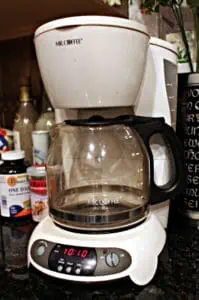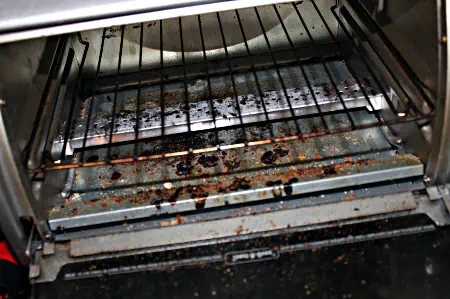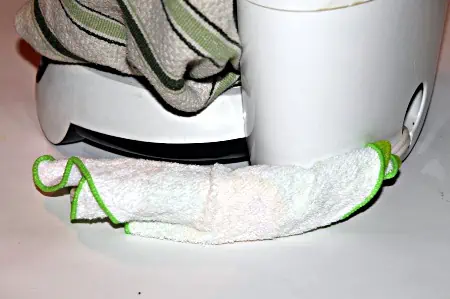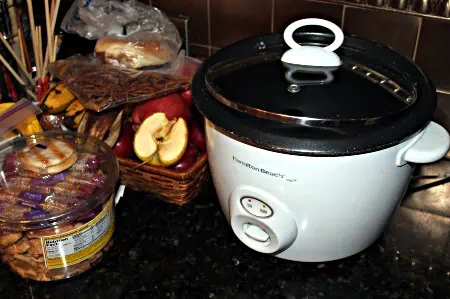March 2014 Packing Tip Of The Month: Packing Small Appliances
Posted in: I'm a Mover, Pro Packing GuidesSmall Details for Packing Small Appliances
After talking in the last newsletter about packing tea cups, pint glasses and beer mugs we find ourselves in the kitchen once again for our packing tip of the month. We know, sometimes it feels like it takes a month to pack a kitchen. We promise we’ll be semi-brief.
There are no great secrets to packing small appliances, but paying attention to the little things can go a long way, both in pleasing your customers and avoiding claims from damages. To this end, here are eight simple ideas.
1. Render your opponent powerless.
Before you start handling anything with a power source be sure to be safe. Unplug the item or take out the batteries. Yes, it’s almost so simple it’s stupid to mention, right? But in the middle of a kitchen full of breakables it’s easy to forget that electric knife runs on Duracells, and pushing or grabbing that sucker the wrong way can send you to the ER with a finger packed in ice.

2. Pull the cord.
If the electrical cord can be removed from the unit, do it. The same goes for small electronics with coaxial cables. Pressure in the wrong place can bend or snap a connection; avoid such problems by unplugging and disconnecting non-fixed wires and cords. Then remember, of course, to pack those cords along with their owners!
3. Look for loose odds and ends.
If a small appliance has any parts that can be removed by hand or are not attached to the unit take those parts off/out and wrap them separately. We’re talking here about microwave trays, coffee maker pots and crock pot lids, as well as parts that may be hiding in plain sight inside certain items, like the inner pot of a rice cooker or that little doo-dad at the bottom of a bread maker. Once wrapped, these parts can usually be put back in place, just now with more adequate protection from the impending shake and bounce.
4. Spend time, save blood.
If you do come across any parts with sharp edges – blades for the food processor or the blender, for example – wrap them loosely with plenty of paper and, whenever possible, place them back inside their owners. wrap a piece of tape around for good measure and write SHARP on the outside in large, clear letters. Not only will this help keep the unpacker from losing blood, it will alert him or her to the fact that there is something inside this bundle of crumpled paper which might otherwise get thrown out.
5. Keep it clean.
Before wrapping these small appliances make sure they are reasonably clean. Residue inside that juicer or crumbs at the bottom of the toaster may or may not breed mold and other organic stowaways but try to leave the science experiments for the customer’s kid’s science class. Give these items a quick wipe down if there’s any doubt. And make sure there’s no water in that steam iron!
6. Watch the wires!
The metal prongs on an appliance’s plug can put scratches in that appliance’s surface. When wrapping each small appliance make sure that its plug has something protecting it – some packing paper if not a dish towel or hand cloth. Realistically speaking there may not be much risk in packing that cord in there any which way but why not take the extra few seconds? Again, small details please customers – and prevent claims.
7. Use ‘em if you got ‘em.
If the customer has the original packaging for any small appliances (or any items at all), use them. Use the Styrofoam corners or, if they are missing, use packing paper to keep the item snug in its original home – which not only adds a nice extra bit of protection to that item but to the items around it inside that dish pack or 3.0 or 4.5 carton. *If the customer has the original packaging they may have the appliance’s user manual too; if so pack that in there as well.
8. Don’t go nuts.
And for anyone who uses foam peanuts for packing, try to stick with packing paper when dealing with small appliances. It’s too easy for those peanuts to get stuck or hidden inside these items, a scenario which can lead to a very unhappy ending.
Once we’ve taken care of these minor but noteworthy aspects of small appliance preparation we are ready to wrap them up in packing paper – enough, of course, to keep them safe from harm inside their cartons.
Again, packing small appliances is not particularly problematic when done with care, but paying attention to these smaller issues can help prevent larger ones from arising.
Rice cooker demo:
(1) Find out where that cord runs and unplug it before moving your item.
(2) Rice cookers have a removable pot; underneath is a heat sensor that moves up and down, usually on a spring, take care not to put undue pressure on it when padding this inner pot, with a hand towel if one is available.
(3) Another hand towel (or piece of packing paper) keeps the inner pot and lid from scratching each other; placing the lid upside down keeps the handle on top inside and out of the way.












